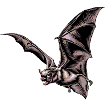Museum, University of Nebraska State

University of Nebraska State Museum: Mammalogy Papers
Document Type
Article
Date of this Version
7-8-2005
Citation
Special Publications of the Museum of Texas Tech University (July 8, 2005) number 48 (SP-048). Available online at http://www.nsrl.ttu.edu/publications/specpubs.htm.
Abstract
The modern history of Jamaica is entwined with European exploration of the New World beginning with the landing of Columbus at Discovery Bay on May 4, 1494, during his second voyage to the Americas. Since that time the word Jamaica has conjured thoughts of tropical beaches, trade winds, pleasant tropical nights, Spaniards, British navy, Empire, sugar, rum, plantations, slavery, revolt, maroons, pirates, Port Royal, disasters, hurricanes, and in more recent years independence, tourism, Reggae, and welcoming and happy residents. Our knowledge of Jamaican natural history begins with Browne (1789). He and other early naturalists displayed a broad interest in plants and animals, including bats, but thorough surveys of the island’s chiropteran fauna were not accomplished until the 1960s when mist nets came into general use. Following Browne (1789), the general natural history of Jamaica and of bats of the island were described by Gosse (1851), Osburn (1865), G. M. Allen (1911), Anthony (1920), Palmer (1940), Sanderson (1941), Asprey and Robbins (1953), Goodwin (1970), Adams (1972), McFarlane (1985, 1986), and Fincham (1997).


Comments
Copyright 2005, Museum of Texas Tech University. Used by permission.